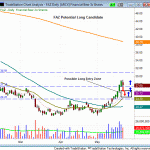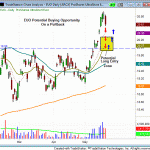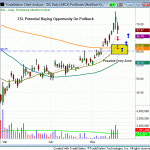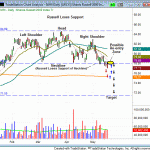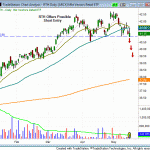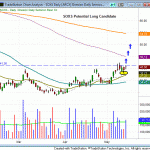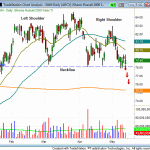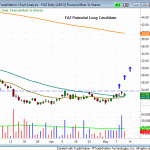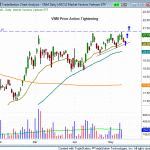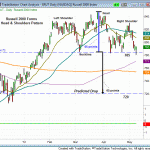Since February of this year, the small-cap Russell 2000 has struggled to move to higher ground and has formed a Head and Shoulders like pattern. Head and Shoulders formations are considered a bearish reversal pattern (when an established uptrend is in place) and occur when price action in the market forms a technical pattern that visually looks like a human head and shoulders. In the chart of the small-cap Russell 2000 below, this pattern formation is quite evident. Notice the symmetry between the left and right shoulders. As of yesterday’s close, the right shoulder has been developing for 21 days and is now just three days shy of the 24 days it took the left shoulder to develop. Also notice the horizontal line labeled, “neckline”. This line represents the final level of support, which if breached, should result in a significant move lower in the index, stock, or ETF. Once support of the neckline is breached, the predicted decline in the index is the distance from the top of the head to the neckline (blue vertical line) projected downward (black vertical line). In this example, if the Russell 2000 loses support of the neckline at 785, then the predicted selloff would be to 720. We will be monitoring the Russell carefully, as its next test of the 785 mark could result in the loss of support and a significant move lower.
